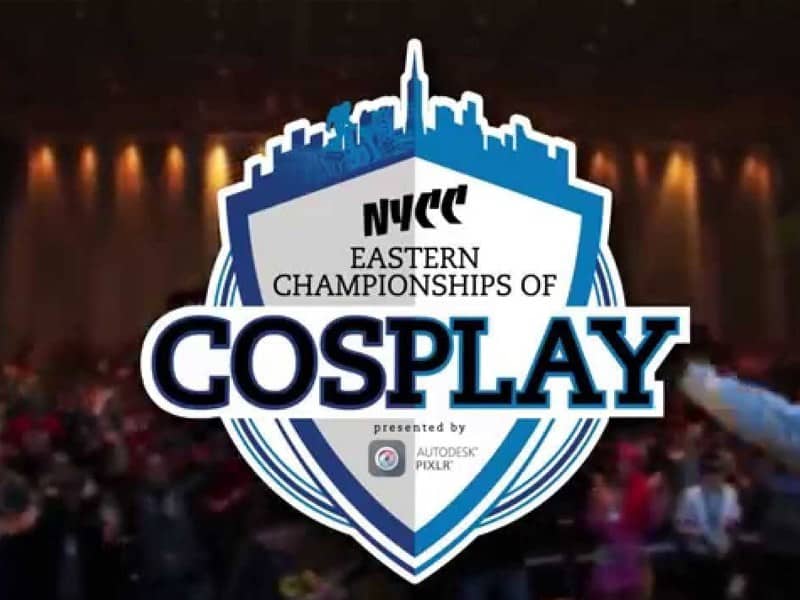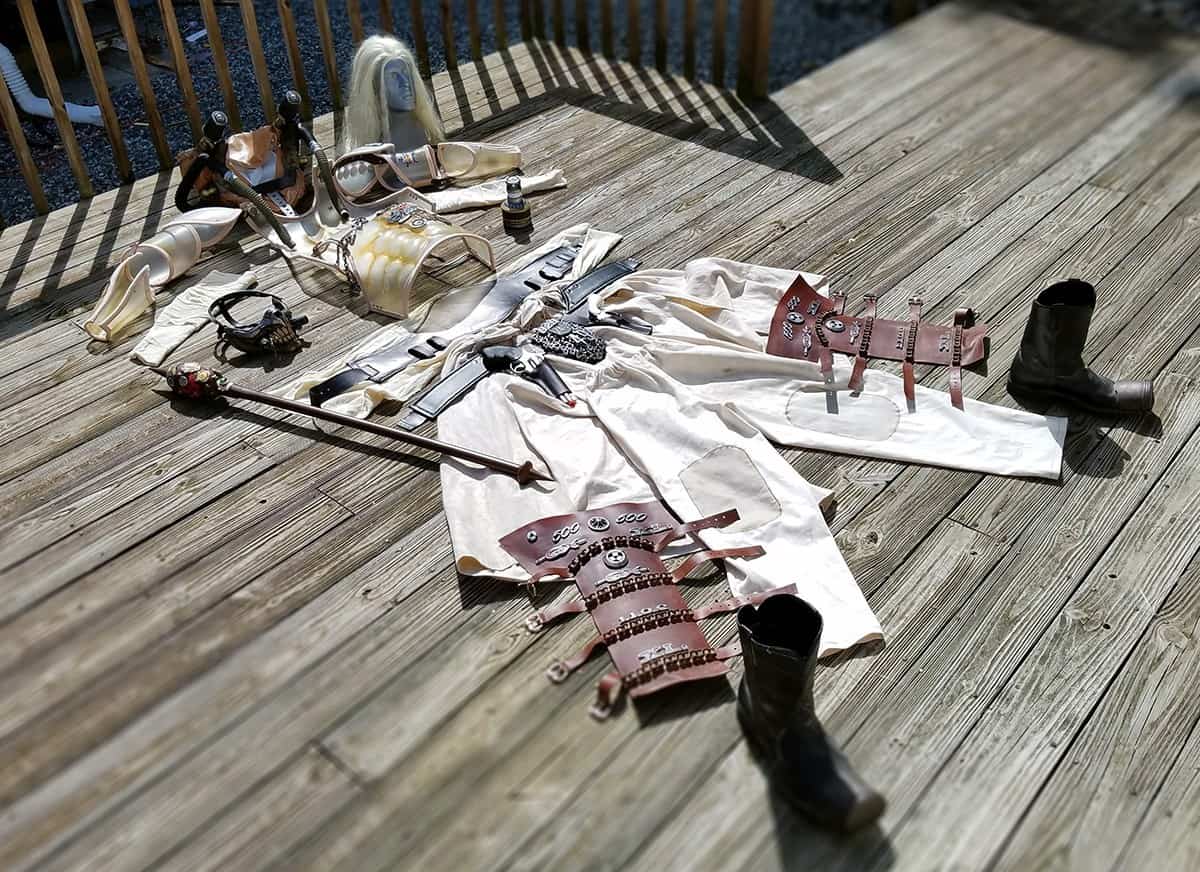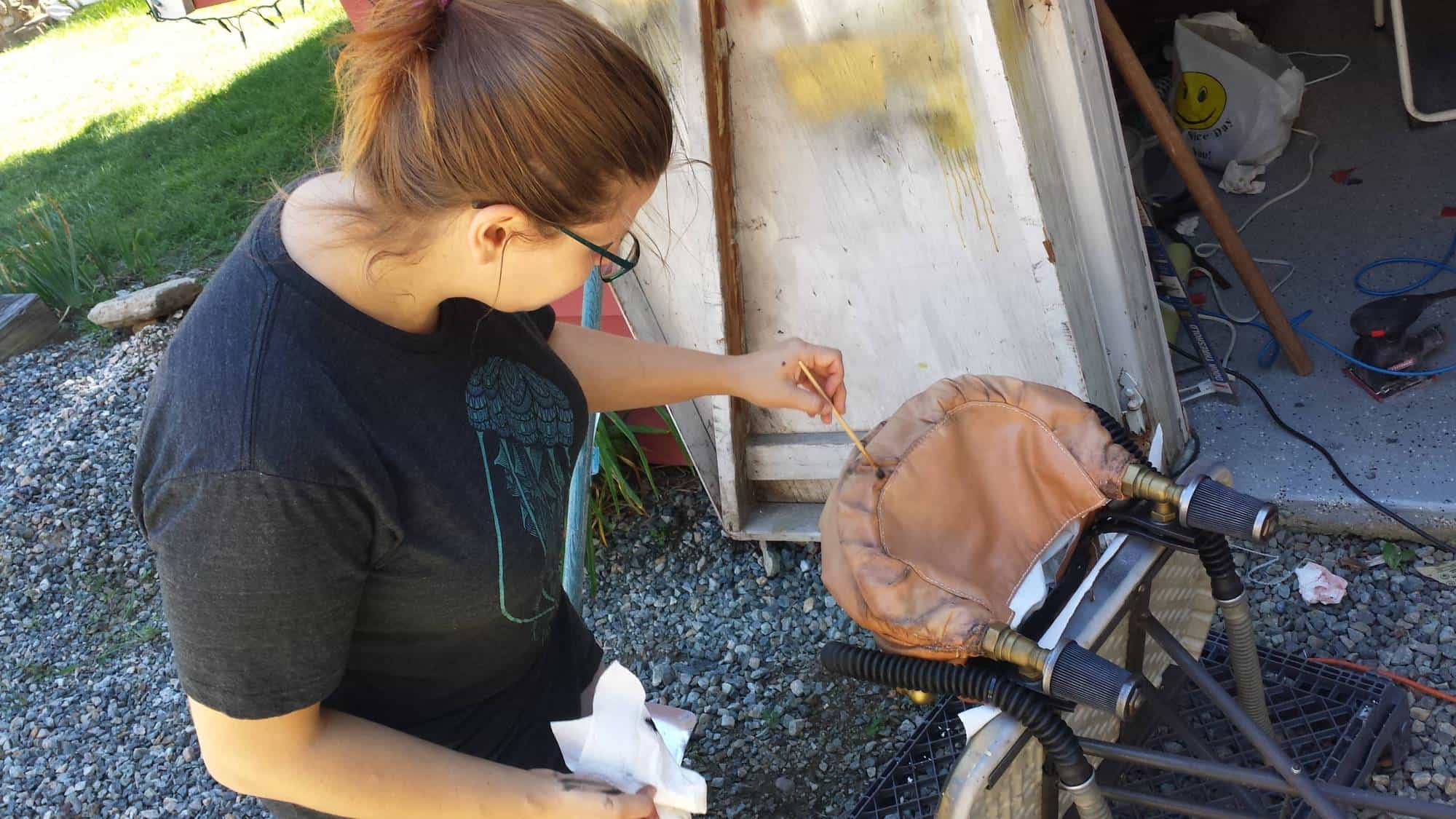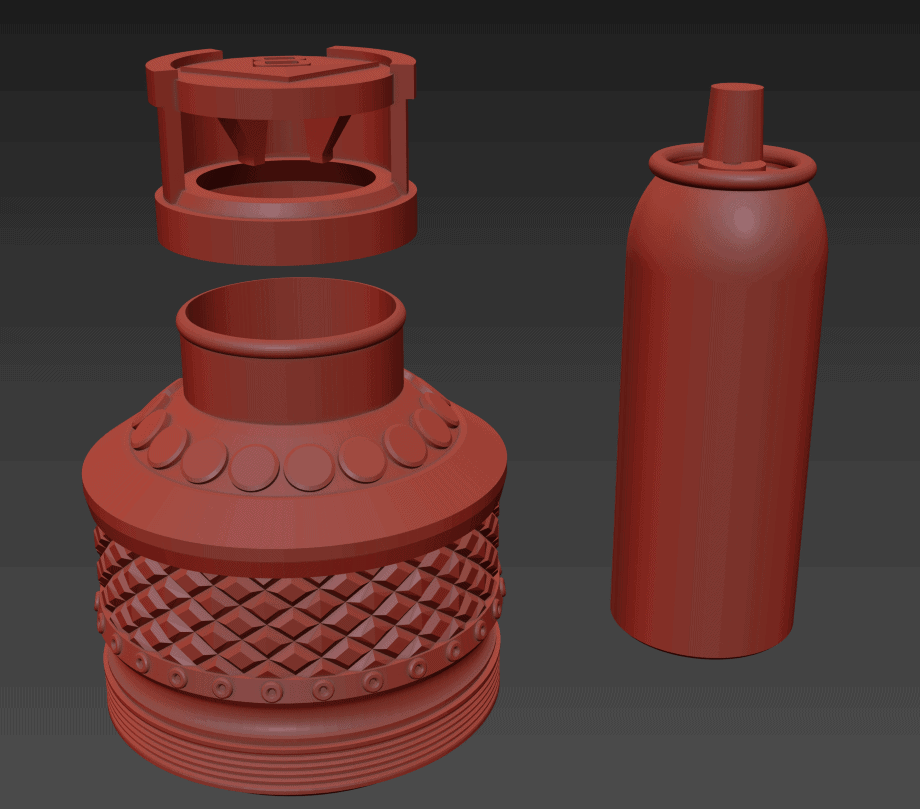One of the things we’ve been working on in the background is the rest of the armor that has to be heat-formed. The bicep armor looks pretty straightforward, as it’s basically a tube, but the forearms were more complicated. It was apparent from review of the film that Joe’s forearm armor has musculature formed onto it in a pretty significant way, and I couldn’t find a cheap way out of doing that like I did with the roman armor. Instead, I broke out ZBrush and whipped up something that we could work on 3d printing.
These are the ‘inside’ and ‘outside’ of the arm armor, respectively, after it had been divided up and thickened for printing. I then printed them out as solid pieces – an outer and inner half for each arm with the design mirrored for left and right wear.
This is obviously not useful or usable in its current form. Much as I wish I could, you can’t heat-form plastic PETG over 3d printed plastic. You’ll melt the print, and you’ll never get the parts to separate. Instead, what we’re planning on doing is coating each arm piece in a layer of brush-on mold rubber (Rebound 25, probably), making a master mold, removing the 3d print, and pouring hydrocal or other plaster into the mold to make stone-esque copies of these 3d printed parts. I should then be able to heat form PETG over them to an acceptable extent.
Step one in that process was smoothing these prints out. They were done at 250 micron layers, which is pretty big compared to most of what I print. They’ve had two coats of Smooth-On’s XTC finishing epoxy applied overtop with a soft brush, and are being sanded right now before molding.
Once they’re nice and polished, we’ll set about doing the rubber molds. I have no idea if this plan is going to work, to be honest – it’s possible the plaster or hydrocal copies will leave residue or marring on hot, transparent PETG. Only thing I can do is try it and see at this point.



